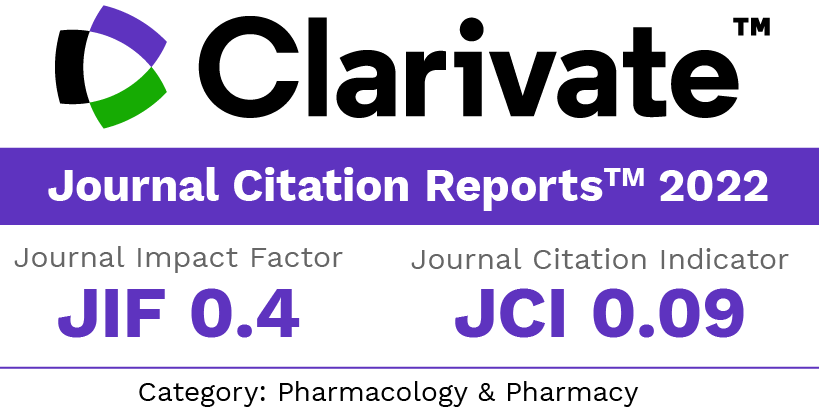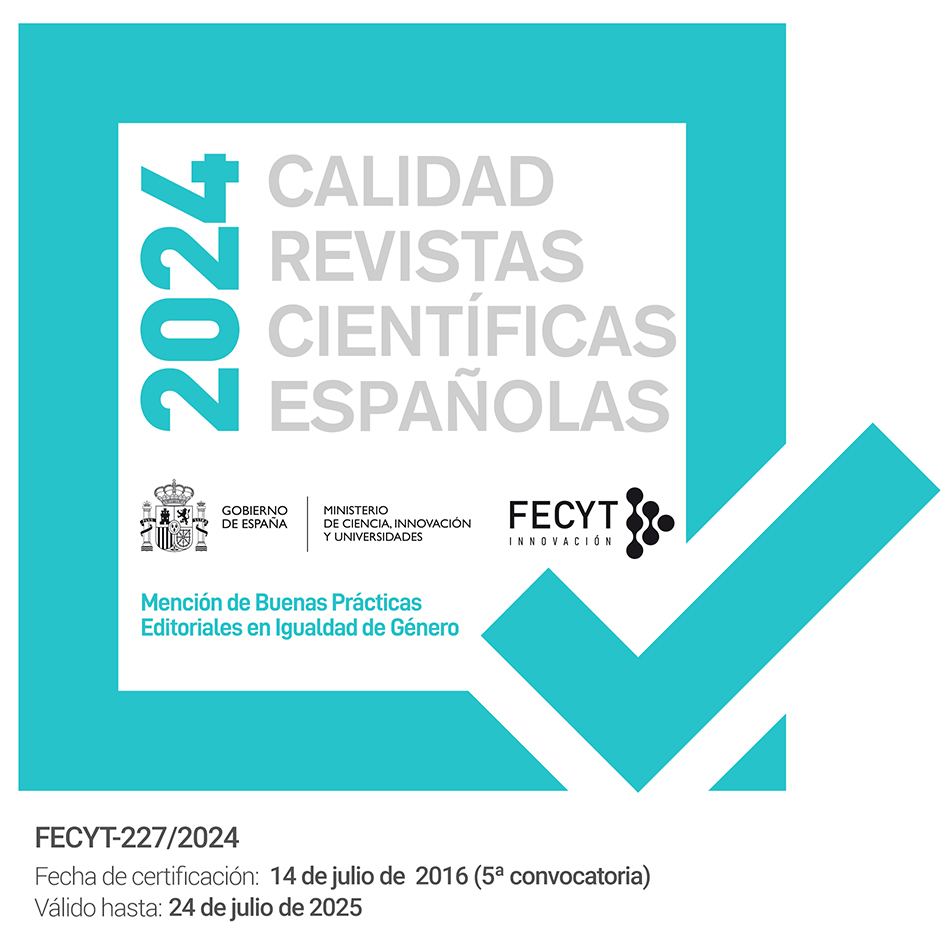Actividades citotóxicas y antibacterianas de las raíces de Capparis zeylanica Linn
Palabras clave:
Capparis zeylanica, Capparidaceae, Actividad antibacteriana, CitotoxicidadResumen
Se analizaron extractos crudos y un ácido graso, ácido octadec-7-en-5-ynoic (1), de la corteza de la raíz de Cappariszeylanica Linn. (familia de las Capparidaceae) para observar sus actividades antibacterianas frente a la bacteriaGram positiva y Gram negativa. Entre los extractos crudos, el extracto de cloroformo mostró una buena actividadfrente a todos los organismos de prueba. El ácido graso (1) aislado del extracto de cloroformo mostró actividadesantibacterianas frente a todos los organismos de prueba, a excepción de E. coli. Las actividades se compararon conun antibiótico estándar: la kanamicina. Las concentraciones inhibitorias mínimas (CIH) de 1, determinadas mediantela técnica de dilución en serie, fueron 64 μg/ml frente a Bacillus subtilis y Shigella dysenteriae. Las actividadescitotóxicas del extracto crudo y del ácido graso (1) se observaron mediante el bioensayo de gambas en salmuera yel valor de LC50 del compuesto fue 6,27 μg/mlDescargas
Citas
Hooker JD. The flora of British India. 1879. L. Reeve & Co., London.
Kirtikar KR and Basu, BD. Indian medicinal plants. 1993. Bishen Singh Mahendra Pal Singh, India.
Yusuf M, Chowdhury JU, Wahab MA and Begum J. Medicinal plants of Bangladesh. 1994. BCSIR Laboratories, Chittagong, Bangladesh.
Duke JA. Dr. Duke’s phytochemical and ethnobotanical databases, phytochemical database. 2004. USDA-ARS-NGRL, Beltsville Agricultural Research Centre, Maryland, USA. available online at http://www.ars-grin.gov/cgi-bin/duke/ethnobot.pl
Lewis WH and Elvin-Lewis MPF. Medical Botany. Plants affecting man’s health. 1977. John Wiley., New York.
Biswas K and Ghosh E. Bharotyo Banoushodhi. 1973. Calcutta University Press, Calcutta.
Ghule BV, Murugananthan G, Nakhat PD and Yeole PG. Immunostimulant effects of Capparis zeylanica Linn. leaves J. Ethnopharmacol. 2006. 108: 311-315.
Mahmood C, Daulatabad JD, Desai VA and Hosaman KM. New source of oil with novel fatty acids for industrial utilization. Ind. Eng. Chem. Res. 1991. 30: 2596-2598.
Haque ME, Haque M, Rahman MM, Rahman MM, Khondkar P, Wahed MII, Mossadik MA, Gray AI and Sarker SD. E-Octadec-8-en-5-ynoic acid from the roots of Capparis zeylanica. Fitoterapia. 2004. 75: 130-133.
Anjum A, Haque ME, Rahman MM and Sarker SD. Antibacterial activities of the compounds from the flower of Alangium salviifolium, Fitoterapia. 2002. 73: 526-528.
Rahman MM, Qais N and Rashid MA. A new C-benzoylated chalcone from Desmos chinensis. Fitoterapia. 2003. 74: 513-516.
Khatune NA, Islam ME, Haque ME, Khondkar P and Rahman MM. 2004. Antibacterial compounds from the seeds of Psoralea corylifolia Linn., Fitoterapia 75: 228-230.
Rahman MM, Sarker SD, Byres M and Gray AI. New salicylic acid and isoflavone derivatives from Flemingia paniculata. J. Nat. Prod. 2004. 67: 402-406.
Rahman MM, Polfreman D, MacGeachan J and Gray AI. Antimicrobial Activities of Barringtonia acutangula, Phytheraphy
Research. 2005. 19: 543-545.
Rahman MM, Parvin S, Haque ME, Islam ME and Mosaddik MA. Antimicrobial and cytotoxic constituents from the seeds of Annona squamosa Linn. Fitoterapia. 2005. 76: 484-489.
Rahman MM and Gray AI. A benzoisofuranone derivative and carbazole Alkaloids from Murraya koenigii and their antimicrobial activity. Phytochemistry. 2005. 66: 1601-1606.
Barry AL. Principle and Practice of Microbiology. 1976. Lea and Fabager, Philadelphia.
Bauer AW, Kibry WMM, Sheris JC, Truck M. Antibiotic susceptibility testing by a standarded single disc method. 1966. Am. J. Clin. Pathol. 45: 493-496.
Reiner R. Antibiotics- An Introduction. 1982. F. Hoffman La Roche & Co., Basle, Switzerland.
Meyer BN, Ferringni NR, Puam JE, Lacobsen LB, Nichols, DE, McLaughlin JL. Brine shrimp: A convenient general bioassay for the active constituents. Planta Medica. 1988. 45: 31-32.
Descargas
Publicado
Cómo citar
Número
Sección
Licencia
Los artículos que se publican en esta revista están sujetos a los siguientes términos en relación a los derechos patrimoniales o de explotación:
- Los autores/as conservarán sus derechos de autor y garantizarán a la revista el derecho de primera publicación de su obra, la cual se distribuirá con una licencia Creative Commons BY-NC-SA 4.0 que permite a terceros reutilizar la obra siempre que se indique su autor, se cite la fuente original y no se haga un uso comercial de la misma.
- Los autores/as podrán adoptar otros acuerdos de licencia no exclusiva de distribución de la versión de la obra publicada (p. ej.: depositarla en un archivo telemático institucional o publicarla en un volumen monográfico) siempre que se indique la fuente original de su publicación.
- Se permite y recomienda a los autores/as difundir su obra a través de Internet (p. ej.: en repositorios institucionales o en su página web) antes y durante el proceso de envío, lo cual puede producir intercambios interesantes y aumentar las citas de la obra publicada. (Véase El efecto del acceso abierto).



















